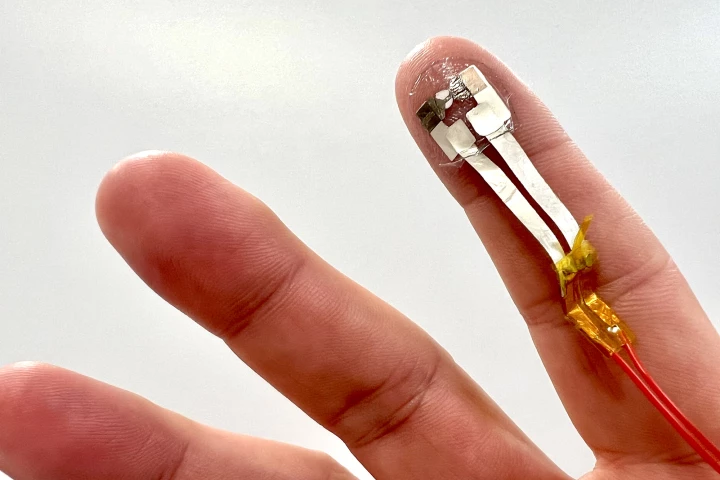Touch
-
Wouldn't it be cool to 'feel' a textured object, or perceive the sensation of running your hand over rich fabric in VR? That's what researchers at Northwestern University are hoping to achieve with their new wearable.
-
In order for a VR environment to seem real, it definitely helps if you can experience the sensation of touch within that virtual world. A special sleeve could soon allow people to better do so, using air instead of electric motors.
-
In the real world, you wouldn't want to carry a controller all the time, or have menus popping up in front of your face – so why put up with those things in VR worlds? With EgoTouch you don't have to, as it puts an interface on the palm of your hand.
-
Scientists have devised a clever new method of allowing people to feel sensations that are transmitted to their skin. Beyond its applications in fields such as gaming and telepresence, the technology could also be used to guide the blind.
-
Touch is a vital sense in human survival and experience, yet not all touch is equal. Men have less touch sensitivity than women, which comes down to biology. Using biomechanics, scientists have found that you can hack nature with hyaluronic acid.
-
When we’re given a choice about where we want to be touched, the touch is significantly more pleasurable, a new study has found. The findings have implications for interpersonal relationships, communication, health and well-being.
-
Human-machine interfaces such as phone screens would be a lot cleaner and longer-lasting if we didn't have to touch them. Scientists have now created a proximity-sensing film which makes such a scenario more possible and practical than ever before.
-
A sensor that can accurately recognize and distinguish objects up to 10 centimeters – about four inches – away without needing to touch them physically has been developed. It could provide a new level of sensitivity to biorobotics.
-
There are already a number of experimental prosthetic hands that provide users with the tactile sensation of touching an object. The MiniTouch system takes things further, as it allows users to sense the temperature of items that they're touching.
-
There are now a number of gloves that deliver tactile sensations to VR users' fingertips when they touch virtual objects. The Phantom glove is unique, however, in that it doesn't cover the fingers, leaving them free for real-world interactions.
-
Researchers have developed an ultrathin electronic tattoo capable of reproducing the localized sensation of touch in its wearer. The device has the potential to be used to manufacture haptic displays and devices for healthcare and robotics.
-
While there are a number of optical systems that provide robotic hands with a sense of touch, most of those systems are flat, so they're confined to the fingertips. A new MIT system, however, works along the entire length of each finger.
Load More










